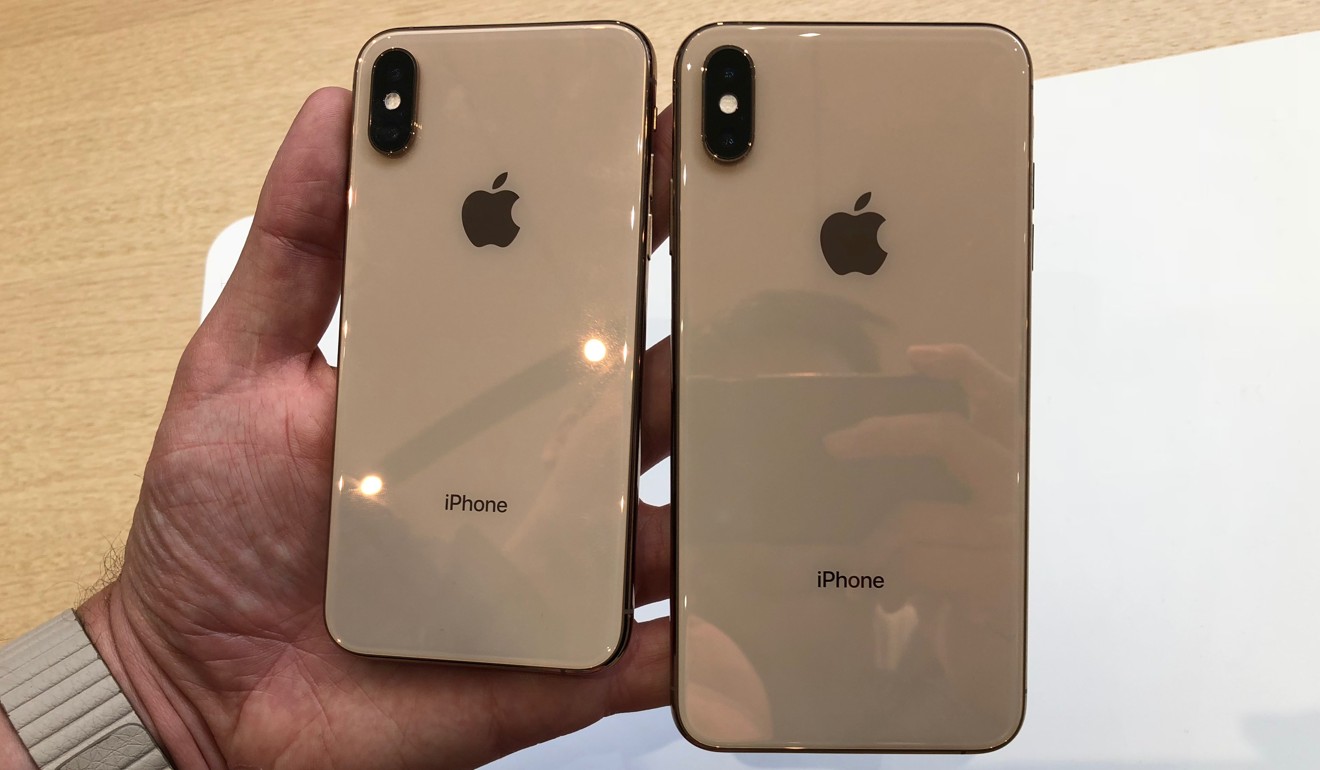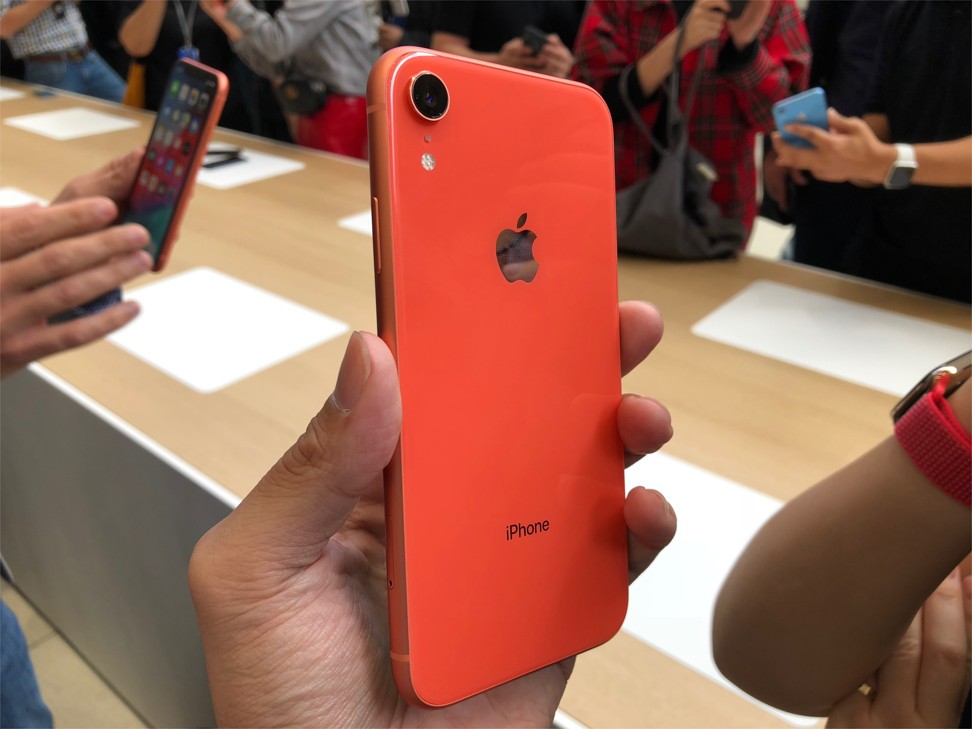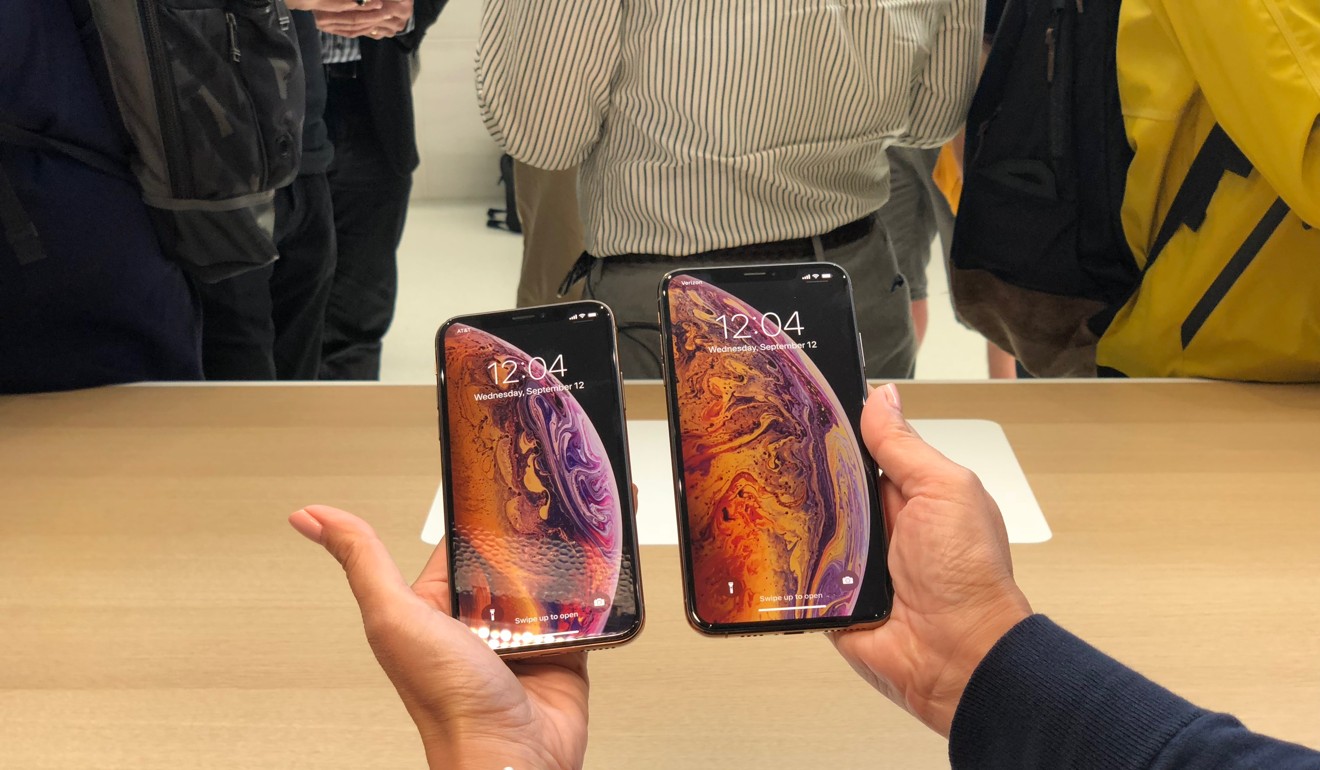
iPhone XS, XS Max, XR first impressions – Apple says goodbye to home button and rolls out ‘budget’ option
The XS Max boasts a 6.5-inch edge-to-edge display but fits easily in the hand, being smaller than the Samsung Galaxy Note 9; the US$749 XR should sell well – but you can easily see where Apple cut costs
Named XS, XS Max, and XR, the first two are iterative updates of the iPhone X. Everything offered on last year's phone – Face ID, OLED display, glass sandwich design, dual cameras – is there, and there’s an improved main camera sensor and new 7-nanometre (7-nm) mobile chipset. The XR, meanwhile, is a “budget” (by Apple standards) variant that uses an LCD display panel and has only one camera.
Apple to embrace iPhone X design with new colours, bigger screens
The XS has the exact same look and dimensions as the original iPhone X, while the Max is a plus-size variant with a 6.5-inch display.
I got my hands on all three briefly, and while the XR should sell the most due to its lower price tag (US$749) and happy-medium screen size of 6.1 inches, I personally am most excited about the XS Max.

With its bezel-less design and curved corners, the 6.5-inch XS Max doesn't feel too big in my hands. It's smaller than a Samsung Galaxy Note 9 and Apple’s older generation Plus phones.
All the upgrades to this year’s iPhones are internal. Apple’s new A12 Bionic chipset is either the world's first or second 7-nm mobile processor (Huawei and Apple are both claiming to be first) and is obviously more powerful and faster than the iPhone X’s A11 chipset.
Apple launches new iPhones with upgraded screens and dual-sim
Apple claims the new iPhones can launch apps 30 per cent faster than the iPhone X, and Face ID will unlock more speedily, too (I did not get to try the latter due to limited time with devices). Apple says battery life on all three new models is improved (so the XS and XS Max last longer than the X, and the XR lasts longer than the 8 Plus), but in usual Apple fashion it did not reveal actual battery capacity size.

Perhaps the best news for Asian customers is that all three new iPhones will have dual SIM support, and it’s a superior version than most of the rest of the world is getting. New iPhones shipping to Hong Kong, China and Macau will all have SIM trays that can hold two SIM cards each. All other regions are getting SIM trays that can hold only one SIM card, with second SIM support coming via eSIM.
eSIM is basically a “virtual SIM card” that doesn’t require a physical SIM card. While that sounds great in theory, right now there are a lot of things holding the technology back, such as lack of carrier support and requiring a user to manually register the eSIM. Once registered, the eSIM is locked to that phone and can’t be swapped around easily. Hongkongers who travel out of the city regularly will be much better off having two free SIM slots rather than eSIMs.

The new iPhones will produce better low-light photos because the main camera lens has a large micron pixel size of 1.4 – the only other phone with pixel size that large is the Huawei P20 Pro. There are new software camera tricks, too, such as the ability to adjust the blur in bokeh shots after the shot has been captured, and “smart HDR” that uses the A12 chipset to identify shadows during photography in real time to enhance dynamic range.

The XR on the surface looks every bit as nice as the XS and XS Max, but upon closer inspection in my hand I could spot the areas in which Apple compromised for cost reasons. The XS and XS Max have stainless steel sides, while the XR’s aluminium railings aren’t as sturdy or dense and it doesn’t feel as premium. The thicker, less flexible LCD display panel results in slightly larger bezels all around the XR than on the OLED iPhones.

The iPhone XS and XS Max will go on sale in Hong Kong on September 21, with the iPhone XR coming in late October. Prices for Hong Kong have not been announced, but US pricing has the XS starting at US$999, XS Max US$1,099, and XR at US$749.

